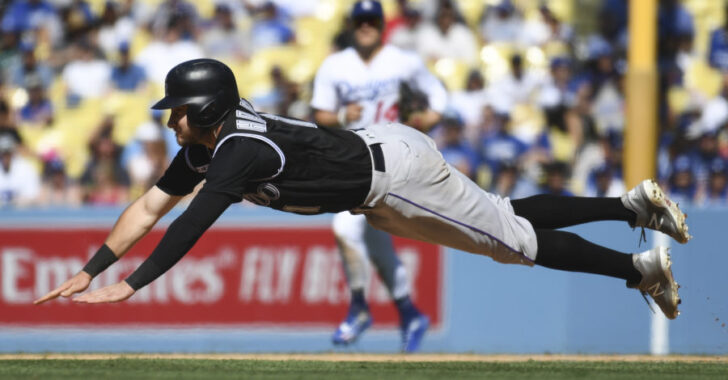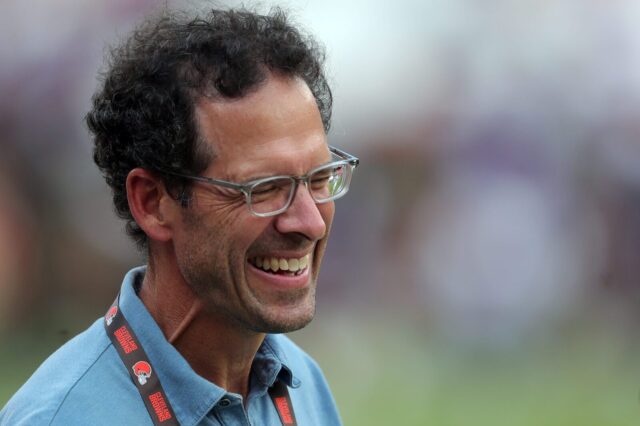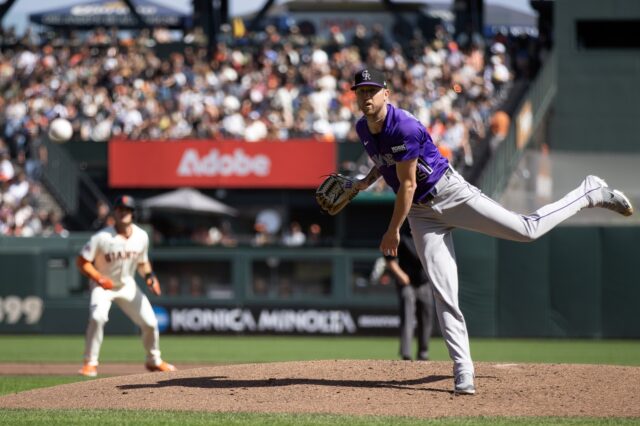There’s a stretch between the Colorado Rockies and Albuquerque Isotopes’ ballparks that is barren – a full length of the highway without patrol cars or stoplights.
Through each level of the organization, the Rockies have found the key to harnessing their home park and beyond with their speed, a catalyst that has changed the major league club’s offensive attack.
“(Baserunning) is something that we take very seriously,” Trevor Story said. “We feel like there’s a lot of games to be won by running the bases the right way and I think as an organization, we focus on that. You see it here at the top level, but I think it’s an organization thing too.”
The proverbial garage, before they even take the field, is a well-stocked one for the Rockies. At the top is Garrett Hampson.
Per Statcast, the youngster’s sprint speed is top-10 in the majors. At 29.9 feet per second, Hampson’s been able to change the game each time he puts the ball in play.
“I’ve got to be the guy to do things that other guys might not be able to do,” Hampson said. “I have to be able to take the extra base (and) steals bases if we need that. (If we’re) down a couple runs (or) down one run, (I have) to be able to score any way I can.”
Bouncing between Triple-A Albuquerque and the Rockies, Hampson has become a hired gun. When the club lost Brendan Rodgers for the year, he was given a more permanent role. Even when he doesn’t start, the young infielder is bound to get a shot later in the game to make a difference.
As Hampson leads the charge, Story, Raimel Tapia and David Dahl continue the trend throughout the roster.
Armed with information from their first case coach – Ron Gideon – the baserunners of the Rockies are sprinting themselves into additional runs.
The club is playing into analytics, while also pushing their limits. No, the stolen base total for the Rockies isn’t a league leader (24th), nor is their 27th-ranked success rate (61.8%).
Instead, they are choosing to make outfielders sweat. Each ball that’s hit to the outfield is a chance for extra bases. The choice was a conscious one to take advantage of every base possible, something that began in spring training.
Drills for foot placement on the bag, pushing off correctly and being able to read balls all came into play in the exhibition slate. Since then, the results have been evident.
“That’s a big part of our game as a team,” Story said. “We try to use our speed the best we can to get extra bases and more times than not, it works out for us. It’s something that a lot of teams don’t take advantage of.”
The newfound aggression was no accident. Coors Field, long known for his offensive explosions, is the biggest outfield in the league.
With the vast area that opposing outfielders are forced to cover, they tend to play deep. The Rockies took notice and began to scout their way to a new formula. Instead of settling for station-to-station offense, they became the big league’s pest.
When deciding to extend the play, the players have the confidence of their manager – the lack of a stoplight.
“I think you always have to be supportive,” Bud Black said. “For the most part, pushing the envelope (and) being aggressive on the bases is a good thing. Because it ultimately will hopefully put pressure on the defense, knowing we do that.”
At times, the aggression has gotten the club into trouble. Just last week, Hampson was thrown out twice in one game – trying to extend a double into a triple and falling on the way to home plate.
The biggest part of aggression is controlled outbursts. Knowing the situation has been pivotal.
“I think you gotta still know the situation,” Hampson said. “I’m not gonna put the team in jeopardy as far as if we have Nolan Arenado coming up, I’m not gonna do something stupid. You’ve got to understand where you’re at in the lineup.”
As the Rockies round the bases to stretch routine singles into hustle doubles, opposing pitchers are also bearing the brunt of it.
“If (pitchers are) worried about something else other than executing a pitch, it’s huge,” Hampson said. “When they have to change their comfortable move to the plate, shorten it up, whatever it is, it’s different for sure.”
Their 362 extra-base hits are tops in the National League and only trail the Minnesota Twins (390) in the majors. Grounding into double plays? Not with the speed of several Rockies’ hitters in the way. They’ve grounded into only 57, the fifth-lowest total in the league.
All of their aggression has resulted in the second-most runs in the NL (529), behind only the Dodgers (538).
The pitching staff has had their problems (league-worst 5.85 earned run average). A battered bullpen has only exacerbated the woes.
But after a down year on offense, the Rockies adjusted.
Down the interstate that is a 162-game schedule, the Rockies have become the vehicle of note.



